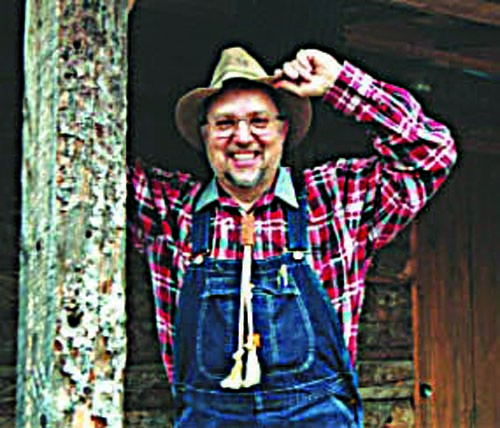I read a lot and often find information worthy of inclusion in this column. Sometimes it’s funny. Other times its just newsy. And sometimes it’s plain ironic.
Ironic is the story I recently read from the Seattle Times about an owl vs owl competition that has forced the all-knowing federal Fish and Wildlife Service into an ironic dilemma. It is advocating to kill a half-million of one type of abundant invasive owl in an effort to save another endangered, protected owl.
According to the story writer, Lynda V. Mapes, the U.S. Fish and Wildlife Service is proposing to enlist shooters to kill more than 500,000 Barred Owls over the next 30 years in the Pacific Northwest to preserve habitat for Northern Spotted Owls, a protected species.
According to what I read, Barred Owls are native to the East Coast but since the 1950s have been expanding their range in the Northwest. They are relentless predators who eat anything that moves. They yank worms from the ground and salamanders out from under rocks. Nail birds on the wing and anything in the water, from fish to snails to crayfish and frogs. Even slugs are on the menu. They are also bigger, more aggressive and more territorial than the Northern Spotted Owls, posing a threat to their survival as a species, which is listed as threatened under the Endangered Species Act.
What makes this story so ironic? Well first off, in past decades, the federal government killed off a big chunk of the logging industry in the Pacific Northwest to save habitat for the spotted owl — which set up conditions for historic habitat-reducing wildfires. Second, well-meaning tree huggers and animal rights folks espouse to love all wild things equally and this owl vs owl throws a monkey-wrench into their thinking. Third, in recent years, the feds have actively tried to hinder hunting with firearms anywhere.
Now it is advocating that a small army of hunters use large-bore shotguns and night scopes as needed for work in darkness or low light. Any hunter may ask the agency for permission to remove the owls under the agency’s protocol, training specifications and permit. Shooters are directed to lure the owls with a recording of another owl’s call. When a Barred Owl comes within 30 yards and is stationary, the goal is shoot to kill!
Of course, folks at the Bird Conservation of Oregon organization are opposed to the owl kill. The article concludes with: “This is really a no-win, awful situation we created for ourselves. It is appalling we have to consider these kinds of measures, and incredibly sad.”
I’ll add that it’s also “ironic.”
***
I’ve got an unusual downsizing problem that I can’t find a solution to. Here’s the deal: In 1975 I subscribed to the inaugural Volume 1 issue of Gray’s Sporting Journal. I still get it 49 years later. Gray’s is not a hunt/fish how-to magazine. It’s what I call an expensive, four-color, slick paper “outdoors persons’ literary magazine.” It calls itself a “magazine for discerning sportspersons” — which is a nice way to say “snobbish.” It only publishes seven issues per year. An annual subscription today is around $40. It’s always been high priced — but worth the bucks for the enjoyment I’ve gotten out of reading it.
Now, here’s my dilemma. I have what I believe is every issue of Gray’s Sporting Journal ever published — something close to 335 issues. I can’t guarantee that I’ve every issue published because the magazine ceased publishing a couple of times in its formative years. Plus, I’ve moved myself four times since 1975. But, I know I’ve got at least 99% of all the Gray’s ever published — enuf to comprise a rare collection of a unique magazine. I’d bet my Gray’s collection is one of a mere handful in the USA.
And, I don’t have room for my collection of Gray’s in our new home. It’s got to go. The magazines need reading by newer more-appreciative eyes than my old peepers. The total subscription price I’ve paid is close to $1,500. The collection is stored in seven boxes. The total weight has to be close to 200 pounds. I’ve estimated it would take 12-feet of library shelf space to display the whole collection. Shipping would be costly.
I’ve tried to sell the collection. No buyers. I’ve tried to swap it to an exclusive hunting/vacation lodge in exchange for a short vacation stay. Ignored. I’ve tried to give it to two major university libraries as a charitable tax donation. Turned me down.
So, I’m out of ideas and I’m hopeful that some reader of this column might have a solution to my downsizing problem with Gray’s. If any reader has an creative idea about how I can sensibly dispose of my Gray’s Sporting Journal collection, please call me at 620-344-1350 or email me at [email protected].
***
I keep uncovering column material as I continue to sort through all the old papers I’ve accumulated down through the years. Below is a story sent to me years ago by a reader from Bird City, Kan., and I never got around to using the story. So, I guess better late than never:
“Back in the horse and mule days, my great-grandfather, Ray Davis, was working as a hired hand for a farmer near Bird City. One day they had hitched up a pair of mules to a wagon to go out and shuck corn The mules balked and refused to move. The farmer was slapping and hitting the mules and they still refused to move.
“About that time, a salesman drove up in an old Model T Ford. He started talking to the farmer to see what was going on and the farmer explained that the mules wouldn’t take even one step. The salesman guaranteed he could make the mules move and the farmer made a bet with him that he couldn’t.
“The salesman said, ‘wait a bit and I bet I can.’ The salesman went into the house, got two sweet potatoes and heated them on the stove. He then came out and told the farmer to get up in the wagon, get a hold on the reins and get ready to go.
He gave one hot sweet potato to my great grandfather and told him to stand behind one mule while he stood behind the other. The salesman then instructed my great grandfather to lift up the mule’s tail and deposit the hot potato at the same time he did. The mules clamped their tails down on the hot sweet potatoes and away they went!
My great-grandfather loved to tell that story and it’s a funny one too.”
***
I agree. Those old-time stories are always worth a laugh. Well, this column is running long, so here’s the words of wisdom for the week: “Save for a rainy day and some new tax comes along and soaks you.”
Hope you and yours had the very merriest Christmas. A holiday toast to you all.




